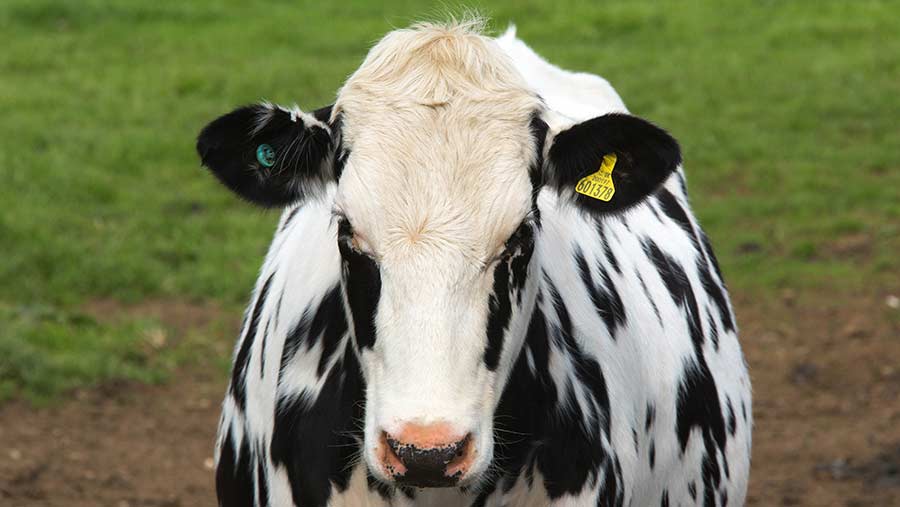Business Clinic: Ways to lower dairy replacement costs
 © Tim Scrivener
© Tim Scrivener Farmers Weekly’s Business Clinic experts offer free advice on legal, finance, tax, insurance, farm management and land issues.
Here Charles Skelton, agribusiness consultant with Savills, give advice on alternatives for dairy replacement rearing.
Q I like rearing my own dairy herd replacements, but it costs a lot of money. Are there options that are cheaper, but still allow me the satisfaction of breeding my own stock?
A Rearing dairy heifers is costly and typically will be the second biggest cost to a dairy herd after feed. Before you make any decisions about changes, it is worth reviewing your business planning and replacement policy to make sure the performance matches the expectation.
There are many reasons why you may be spending a lot of money rearing your heifers.
Your farm buildings may have become outdated for rearing modern dairy cattle. This, combined with low capital investment in the farm over the past 20 years may have left the heifer-rearing business at the back of the queue.
See also: Keep good stock records to avoid losing BPS cash
 Charles Skelton is food and farming consultant with Savills Rural
Charles Skelton is food and farming consultant with Savills RuralExamine whether your heifers are getting the right husbandry and attention – have your farm staff and any family labour used received the most up-to-date training, or are they distracted by other more demanding farm business enterprises?
It may be that your herd has grown and so has the total number of cattle on the holding – you have simply lost control without noticing and you now have too much stock.
This is quite a common scenario – often people are simply carrying too many heifers and/or they are not growing them well enough and fast enough.
The replacements enterprise is often not costed as closely as the milking portion of the herd and there is scope to cut the cost of home-reared replacements on many farms.
Contract-reared heifers
If after scrutinising costs, the enjoyment of rearing your own cattle has become greater than the profitability, then perhaps it is no longer realistic to do it.
If you want to retain control of breeding then the only realistic alternative is to have the heifers contract reared.
By finding a good partner to rear heifers, you remove from your own holding all of the risks that come with using your own (possibly old) buildings, labour, land and management.
The contractor has the incentive of receiving regular headage payments for doing the job well and has the free farmyard manure for his land.
Regular checks
There are risks to this less hands-on option, including poor growth rates and poor cattle husbandry and I would recommend you carry out regular weight and growth checks.
Simple arithmetic tells us that, to calve at two years old at the right size and weight for her to become a good cow, the heifer must achieve 0.7-0.8kg/liveweight gain a day between birth and calving.
When looking for a good rearing contractor, you should consider whether he/she can deliver on this requirement.
Ask the question: “How can you prove to me that you are putting this growth on my heifers?”
You are looking for monthly weighing; you should interrogate the whole feeding policy in terms of forage and supplementary feed requirement. It is after all a partnership that requires mutual trust.
You should expect to pay anything between £1.10 and £1.40 a head a day; the greatest cash expense to the contractor will be purchased feed. Your payment is directly linked to the cost of bought-in feedstuffs.
The agreement should also cover veterinary and health costs, AI and semen, haulage responsibilities, penalty clauses for not meeting growth rates and insurance.
Buy cattle in instead of breeding
Of course you could consider relinquishing total control of replacement breeding – it is perfectly possible to buy better cattle than you may already have and although it’s a big cheque to write, it is often cost-effective in the long run.
Some producers do get tied up in the history and lines they have been using and this is not always in the best interest of the business.
Buying in replacements also frees up buildings, land, time and management, meaning you could milk more cows and potentially become more profitable as a direct consequence.
The downsides include the possibility of bringing new disease to the farm, but modern veterinary techniques mean most disease can be identified long before any cattle are loaded onto a lorry.
However, there is a time issue, as it can take a while to source good, clean cattle.
Do you have a question for the panel?
Outline your legal, tax, finance, insurance or farm management question in no more than 350 words and Farmers Weekly will put it to a member of the panel. Please give as much information as possible.
Send your enquiry to Business Clinic, Farmers Weekly, RBI, Quadrant House, The Quadrant, Sutton, Surrey SM2 5AS.
You can also email your question to fwbusinessclinic@rbi.co.uk.

